
19 minute read
Inspiring Fung Scholars Stories
Kathleen Schwind
Advertisement
I have always been interested in the international. Growing up in a multicultural household, I was exposed early to different cultures and new ways of thinking. But it wasn’t until I began my undergraduate at MIT that I had the chance to visit the places I had, up until that point, only heard about. For a majority of the two dozen countries I traveled to through MIT, I wasn’t a tourist–I was a researcher, a student, or a Scholar. Becoming a Fung Scholar in my sophomore year helped me build this international perspective, and just as importantly, connected me with like-minded students and young professionals doing incredible, globally focused work.
Gaining a Global Perspective
From my time abroad as a Fung Scholar, I realized the importance of gaining a global perspective, and the importance of empowering students by giving them practical skills to succeed in a global working environment. Areas like science, technology, engineering and math, known as STEM, are rapidly growing fields, as is the entrepreneurship space at both the domestic and international level. Inspired and humbled by the experience I had to learn from international counterparts as a Fung Scholar, one of my focuses and passions while at MIT was providing younger students with similar experiences, no matter their background.
UAVs, STEM Education and 21st Century Skill Building in El Salvador
In 2017, I worked with a special interest group at MIT to partner with a non-profit and a local school, located in a rainforest village in El Salvador, to develop a two-week-long workshop focused on STEM and using unmanned aerial vehicles (UAVs) for urban planning and community development. The vision was to expose these elementary, middle, and high students to the STEM fields, empower them to become stewards of their community by using innovative technologies like UAVs, and teach them tangible ‘21st Century Skills’ like teamwork, creativity and problemsolving.
STEM plays a particularly important role in the Latin American economy, and being able to keep up with these rapidly changing technologies is essential for young people to gain employment and help their communities. Various reports published by organizations like the United Nations and General Electric mention the importance of ‘transmitting enthusiasm’ for the field of STEM. Through hands-on projects
and real-world applications, our team was able to transmit that enthusiasm to our students. We executed the first two parts of our vision (exposure to STEM and community empowerment) through our UAV-centered workshop. In the workshop we focused on different aspects of small drones (like the Phantom 4) and their use, touching on both the technical and planning elements. These included safety mechanisms, aerodynamics and UAV design, flying skills, and fixing and repairing UAVs. Each day we created an open environment with hands-on activities and class engagement, in addition to the brief teaching dialogue presented by our team members. Near the end of the workshop we let the students use their recently acquired skills to survey their village, using the drone and various mapping programs to capture aerial and 3D images. During the study, they were paying attention to the desirable and undesirable characteristics in their community (streets being well lit, a part of the road collecting too much rainwater, etc.). Back in the classroom, they took these notes and layered them on top of the drone images to mark patterns and draw conclusions on what parts of the village needed improvement. The final step was to brainstorm how they could work with the village leaderships and their schools to address these newly identified issues. Through this exercise, the students had the chance to interact with and become integral members of the community, as they took ownership of how they could improve their village and actually help make these changes happen. Fun, hands-on, STEM-based workshops, like this one, expose students early on in their academic careers to the accessibility of STEM, while also exposing them to the future of the planning field.

After surveying their village, and comparing their hand drawn maps to the aerial footage taken by the drone, students identified ‘good’ and ‘bad’ characteristics in their community, later brainstorming how to address those issues.
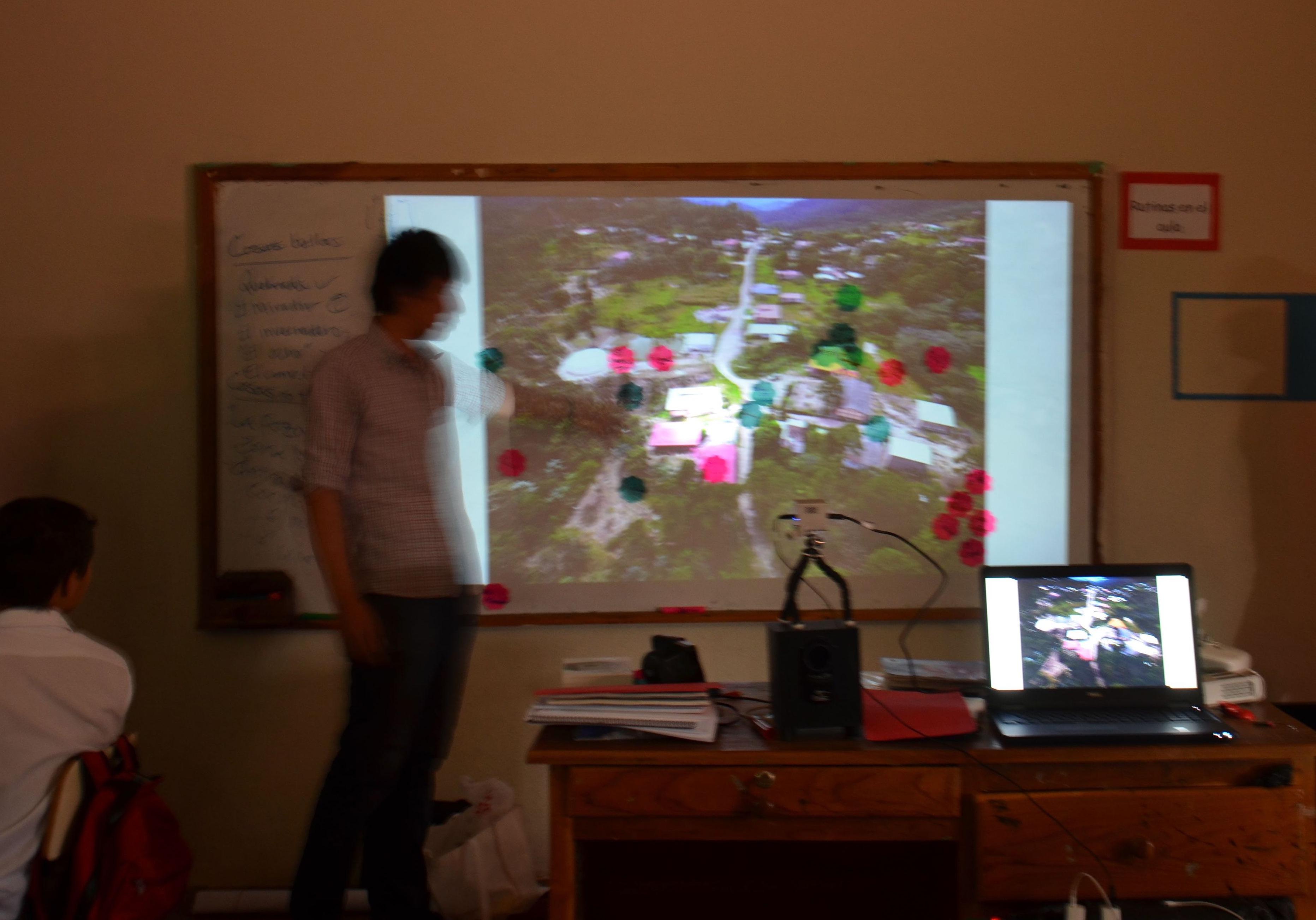
To fulfill the third part of our vision (teaching tangible ‘21st century skills’), I produced a miniature version of the Gifted and Talented Education (GATE) Olympics, an event that I founded for students in California. The GATE Olympics is a fun, team-based academic competition made up of giant life size mazes and puzzles, which are called ‘challenges’, that focus on teamwork, problem-solving, and creativity rather than prior knowledge. The event was born in 2010 out of my vision of increasing enthusiasm for learning and education. I believe motivation is 80% of education, and while having fun, students get to actually practice the skills that employers rank among the most valuable today in the workplace. These positive experiences have a profound effect on their interest in education at large. One of the unique aspects of the GATE Olympics is that it does not test prior knowledge. This makes the event adaptable to any age group, with any native language (as we’ve demonstrated by holding it in English and Spanish). I was incredibly impressed with the problem-solving skills and resourcefulness of the students in El Salvador especially, and in a majority of the challenges they outperformed their American counterparts. This continues to prove one of my theories surrounding
education: while education systems around the world are far from uniform, the individual’s quest to learn is something that transcends cultures and languages. The question then becomes: how can we cater to communities and students globally, while effectively adapting our teaching structure to mirror the local communities? We believe that the GATE Olympics may be a piece to that answer, and a vehicle to inspire our youth to learn, grow, solve problems, and come up with creative solutions to the biggest challenges in their community and the world at large.
Giving a Global Perspective
I’ve taught workshops and ran GATE Olympics events/activities in countries from El Salvador to Israel, for schools located in rainforests to agricultural communities. In each place, the response and feedback is overwhelmingly positive. A key factor to this success is the cross-cultural nature of the programs. My students learn not only about the topic of the workshop (STEM, entrepreneurship, etc.) but also a new culture and world view and at the same time, I get to learn about their culture and perspectives. The Fung Scholarship gave me an invaluable international education experience early in my college years. This, in addition to the access to an international network, has shaped my worldview and career interests, while giving me valuable skills to succeed in my fields (international relations, national security, defense innovation, water security, and international development). But it has made me equally passionate about passing along my experiences to other students and young people around the world, as they begin their careers in a world more connected than ever.
Building a Passion Project Outside of Work: Crafting + Combining It with Social Impact Conversations
Jamie Ko
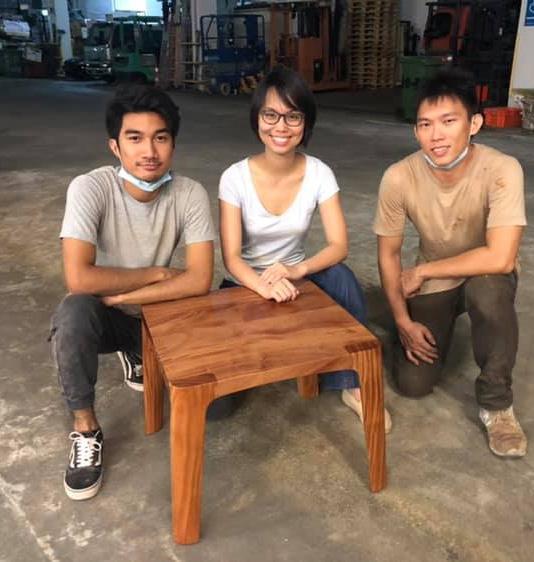
Made my own wooden table at a workshop My first memory of a craft workshop that I signed up for was back in 2012, in Hong Kong, to make a leather wallet. I still keep that wallet today, but my relationship with craft has evolved significantly since.
After that first workshop, I realised I was drawn to creating things with my hands, and “creation” gave me a lot of satisfaction. I think this is because I create a lot of less “tangible” things at work (I made lots of slide decks as a consultant at the start of my career). To ensure I continued to do this consistently even while I got busy with work, I set myself a goal to post a project every month, and that marked the birth of my website, mademyown. co back in 2016. This made me actively seek craft workshops/ projects to try wherever I went.
Made a concrete vase and planter

Made resin and wood jewellery
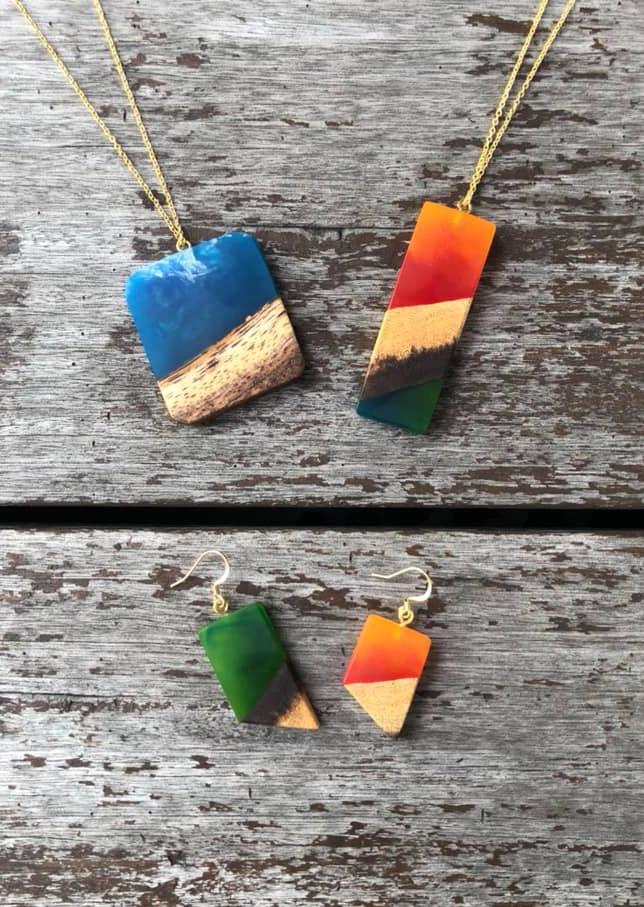
Over time, I realized it changed my life in other ways:
I now appreciate the resources and effort behind every object produced: I have become more conscious in my purchase decisions, and have better appreciation of things I own
I realise how imperfections make objects special and give them character (a feature of handcrafted items, which I have unintentionally incorporated in my many projects :p), and it’s worth investing in fixing objects that effort has already been spent to create (do not need to discard an item just because it is not perfect)
I do not need to own many items to be happy - I feel a lot more attached to items I create, and want to use / wear / take care of them more, and feel less of an urge to shop for more things
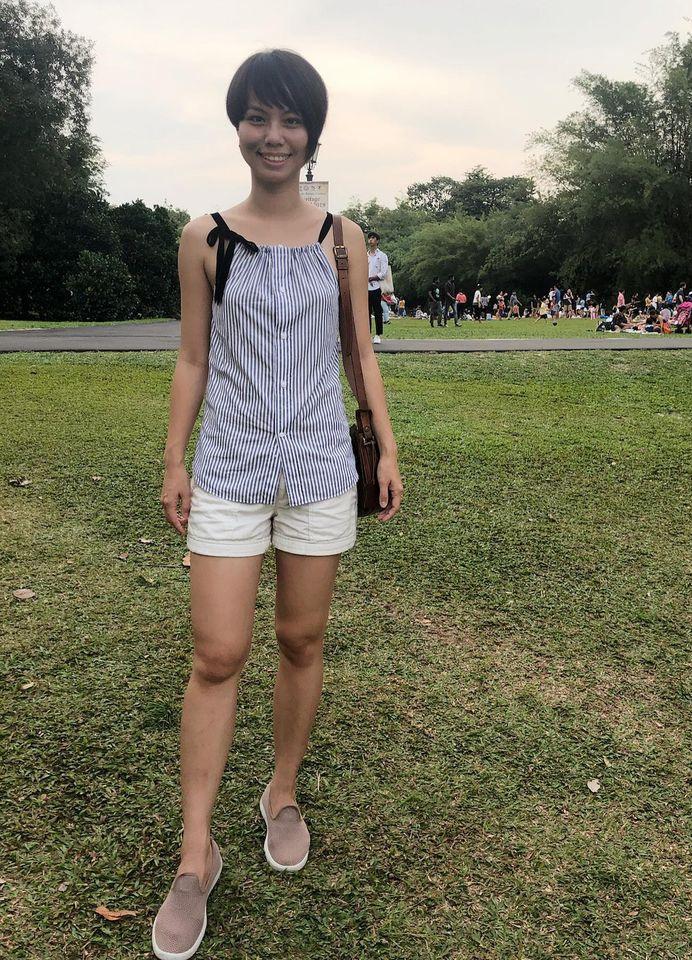
Upcycled my husband’s old shirt into a new top
In 2020, when Covid-19 hit, and many people were confined at home due to movement restriction controls, I felt really lucky to have a hobby that I could continue to find satisfaction from. At the same time, there were many public conversations on issues relating to Covid-19. In Singapore, the widespread migrant worker infections in their dormitories were thrown into the spotlight. I had just completed a craft project using concrete, and that reminded me of the issue (as many migrant workers in Singapore work in the construction industry). As I have always been keen on social impact work, I started to think about how to integrate it into my hobby. That marked the birth of Craft for Conversations - a way for me to try to marry craft to social issues, and help start conversations on them.
I use different materials / crafting methods to represent an issue, and reflect on how the crafting process has parallels with the real world situation, as well as other ways the craft represents facets of the topic. I sell these limited pieces of conversational craft and donate the proceeds to an organisation working on the same issue. I have worked on three project topics so far: Sustainability / Waste, Migrant Worker Inclusion, Inequality, and have raised more than a thousand dollars in the process.
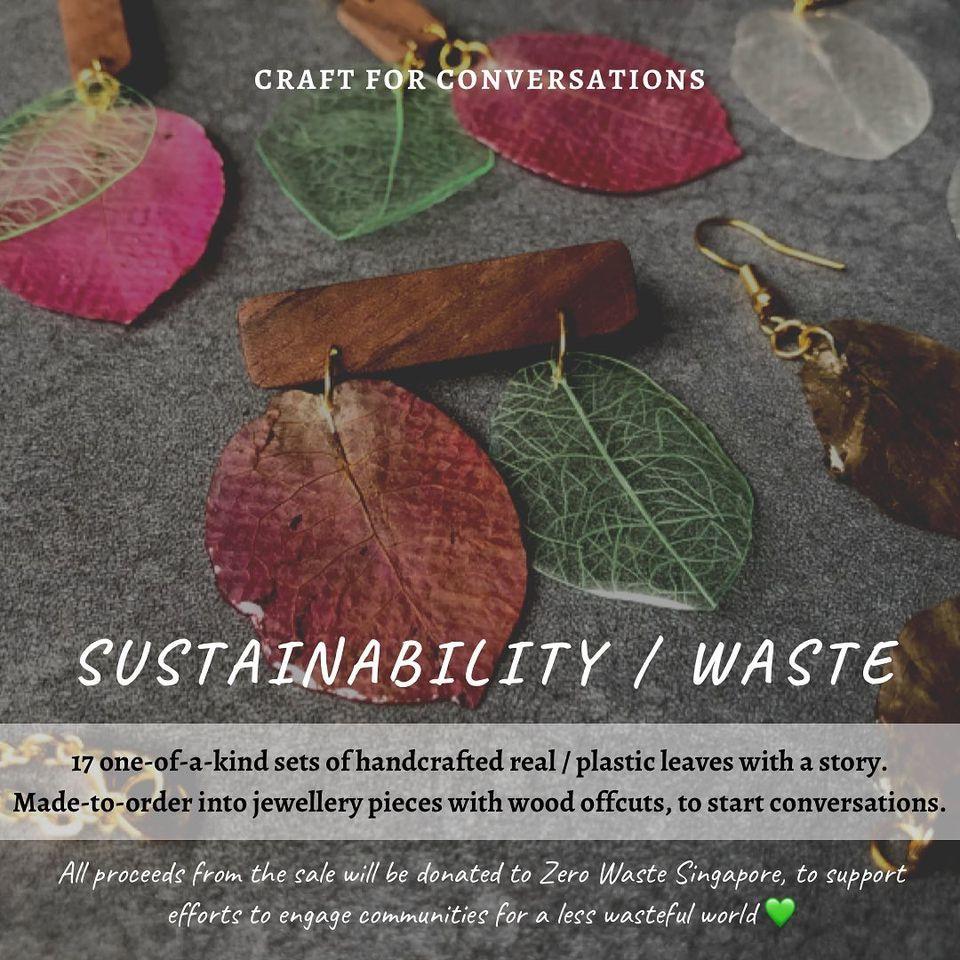


More important to me than the money was the engagement people had on the topics and issues. I was particularly inspired whenever people responded to share their perspectives. As more platforms and content creators fight for our attention, and the wave of consumerism continues, I hope to be able to inject a new perspective, and philosophy towards objects and issues.
I am not sure how these passion projects will evolve, and whether this is the best way I can make a difference to the world, but I think it is important to continue to experiment and be willing to engage. Years ago, when I used to think that I wanted to be a social entrepreneur, I never could quite nail down something I wanted to devote my life to, and to be confident enough to have a proper plan to commit myself to. A friend of mine advised me not to overly stress myself, and perhaps to think of all my ideas as projects. Just give it a try, and if it works, can see how to expand it, but if not, just drop it - it makes the process less intimidating, and something that seems feasible to at least begin, even while having a job at the same time. It’s a philosophy I have been holding onto since, and I am excited to see what the future holds for mademyown.co and Craft for Conversations, or perhaps, something else new?
Mademyown.co : www.mademyown.co / www.facebook.com/mademyownco / www. instagram.com/mademyownco
Craft for Conversations : www.facebook.com/craftforconversations / www.instagram.com/craftforconversations

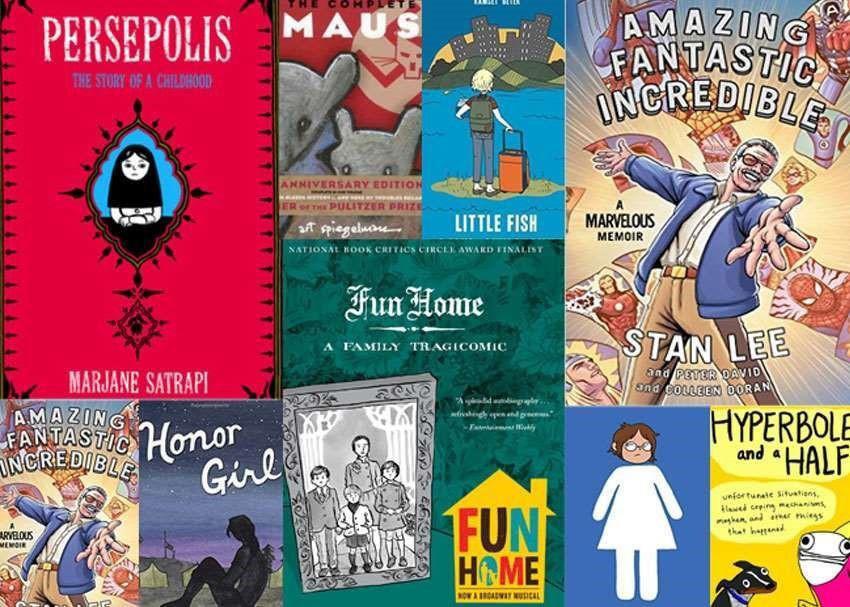
Graphic novel as a medium to integrate teaching reading and speaking in English
Yong Xin (Alexandrovna) Mo
Recently, Lingnan University in Hong Kong and Heidelberg University in Germany would like to hold an online conference on 24-25 March 2021 for papers in the theme, “Then and Now: Collecting Art and Exhibiting Cultures” in Asia Conference. It is interesting to notice that the panel has encouraged a discussion on the role of university collections of art, artifacts and manuscripts in Hong Kong and other Asian regions to support teaching and research on related subjects. As such, it reminds me of one of the successful stories in my teaching-research experiences in the Tromsø-Arkhangelsk Master program of English Linguistics in ‘Teaching Methods and Principles in Foreign Language Acquisition and Learning’ in the Arctic University of Norway and the Northern (Arctic) Federal University in the post-Soviet Nordic-Asian region in 2017.
The period of my teaching practice has lasted for four weeks in total, from 31 Jan 2017 to 25 Feb 2017. My teaching-research practice took place in the institute of Philology and International Communication in the Northern (Arctic) Federal University in Arkhangelsk in Arctic Russia. The target group of my teaching practice was 10 third-year undergraduate students, who were studying English Linguistics and to be trained to become English teachers in schools upon graduation. Their English was B1 level and they just passed the exam of stylistics. All of them were females. The course was English for Communication. As the name put it, the goal of the course was to maximize the opportunities for students to communicate in English. My hypothesis was that graphic novels could be a medium integrating teaching reading and speaking, because the explicit teaching of reading strategy on interpreting comics elements could help to develop speaking activities for students in task-based approach.
Task-based approach
Then what does the task-based approach involve specifically? It is noted that it is a sequence of communicative tasks to be carried out in the target language (Nunan, 1996). It aims to provide learners with a natural context for language learning by doing things with language (Bradford, 1973: 15-29), because they are given abundant opportunities to interact during the tasks by working together, understanding each other and expressing their own meanings (Candlin & Murphy, 1987: cited in Bygate, 1999). Prabhu (1987: cited in Rod Ellis)
distinguishes three general types of tasks based on the kind of cognitive activity involved A) information gap tasks, when students exchange pieces of information to complete a task, B) opinion gap task in which learners think about and state their personal preferences, attitudes, or feelings in order to complete a task C) reasoning gap tasks when students derive some new information by inferring it from information they have been given.
Literacy and Oracy
Then how to understand the relationship between reading and speaking of human beings? In English Teacher’s Handbook, Stephen and Susan Judy (Tchudi) recommend ranking instructional priorities to aid sound course planning (1979) of which the first priority should be to direct attention to “oracy” (listening and speaking) along with “literacy” (reading and writing) in course planning. Thus, the logical flow is that reading as the starting point in literacy and speaking as the final extended activity in oracy, promoting the overall development of language of a student. Such theory is also found in Krashen’s (1985) input theory, which suggested meaningful comprehensible input as an important source of language learning that reading, which is a receptive skill or meaningful input, can benefit students in enhancing elicitation of meaningful output and fluency development. (Nation and Newton, 2009).
Graphic novels and Intermedial theory
As my lesson was adopting a taskbased approach, the main objective was about meaningful communication amongst the teachers-students in the group. Intermedial theory explains the key feature of the medium of comics to support its role in executing meaningful communicative activities in task-based approach. Graphic novel is an intermedial art form (medium) because juxtaposition of images and words in deliberate sequence become into one storytelling apparatus. They can be transmedial because they have non-media-specific elements which are shared by other forms of media like heroic characters and serial storytelling. They are also intermedial as they often refer to other media by importing specific techniques such as camera perspectives from film or verbal forms of narration from literature. Therefore, graphic novels do not restrict only semiotic analysis of comics’ visual elements but get us involved in the production of narrative meaning” (Rippl and Etter 2013, 193; Hoppeler, Etter, and Rippl 2009; Rippl 2004, McCloud, 1993: 30-33).
Then what are the proposed activities to support negotiation of meanings with graphic novels? Zhang (2009: 3234) has suggested teacher-researchers three kinds of activities that could serve the purpose of reading to speaking: they are namely read to act, read to debate(discuss) and read to interview for both intensive and extensive reading classes. On top of this, Scrivener (2009) also made similar variants to post-text communicative activities, like roleplaying, debating, and personalization.
Then what are the assumptions behind? In visual anthropology, cartoonist Scott McCloud has stated, comics is a medium like a vessel which can hold any number of ideas of images (1993, p.6) In teaching, an explicit instruction of reading strategy in visual elements in graphic novels such as color, shading, panel, layout, perspective and even the lettering style (Schwarz, 2006, p.58-64) has high potential to provoke “productive thinking” in order to provoke the need of speaking or writing (Arnheim, 1986, p.138). They are classroom communicative activities like drama extension, presentation, groupworks (Brenna, UKLA 2012, p. 8894) and even meaningful discussions about visual perception, drawing and designing, art history, and content on multiple levels (Berkowitz & Packer, 2001). Therefore, I was interested to observe an understanding of visual elements in graphic novels as a reading strategy in my lesson plan and see how it works to turn strategic reading to productive thinking, and then provoke speaking at the final task. Marjane Satrapi’s memoir about Childhood in Iran-Persepolis: The Story of a Childhood (2003) was the educational graphic novel in English Literature for post-conflict discourse study, and I have selected it for my observation and practice.
The results were compelling. It is because the anticipated problem expected from previous observation experiences since 2015 was that the students would interact with each other in Russian, rather than in English.
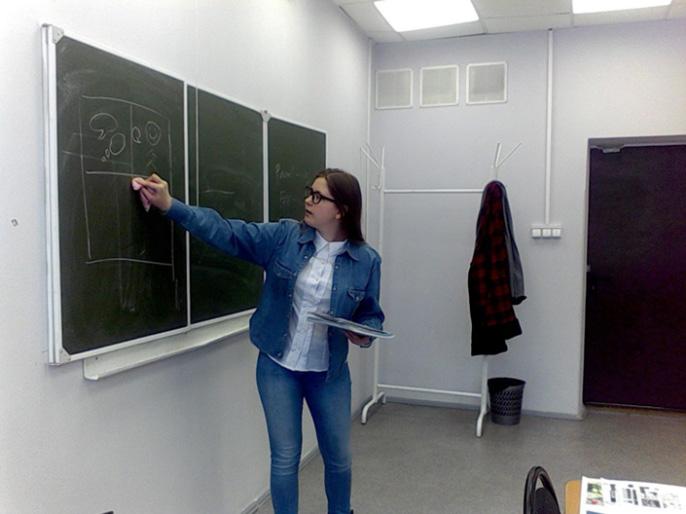
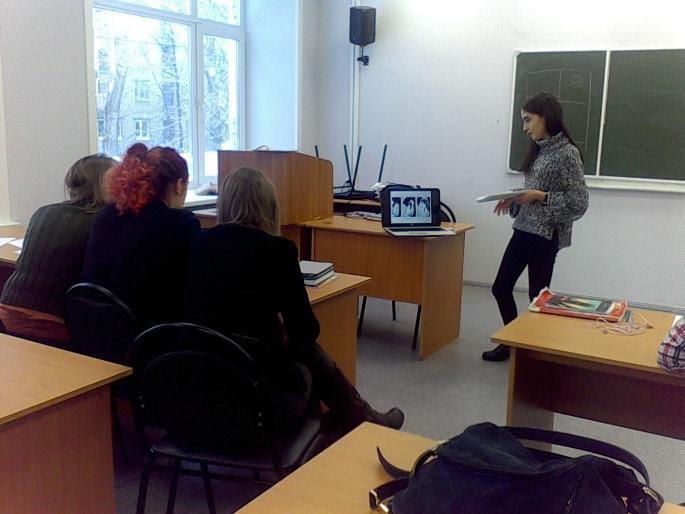
Intrinsic motivation to perform
First, students were mostly very engaged in doing information gap interviewing tasks. In the first task – information gap interviewing activity – I could see that the students are very wellprepared for the presentation after reading the graphic novels and the supplementary reading of Understanding Comics by ScottMcCloud (1993). I did not require them to make any presentation material in my instruction, but just simply told them to interview each other at class and summarize orally. They were very engaged to use chalk and board as well as even PowerPoint presentations. I could conclude that application of reading strategies in visual elements to do the information exchange brought them intrinsic motivation to perform extended activities as speaking tasks, such as summarization and paraphrasing.
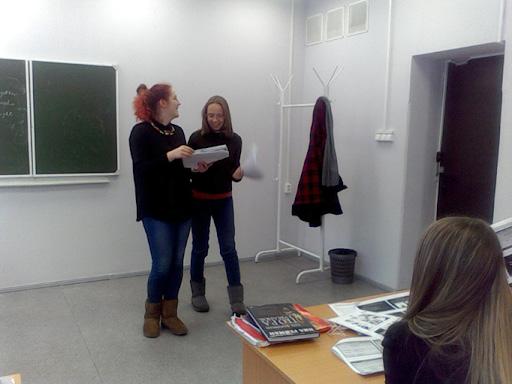
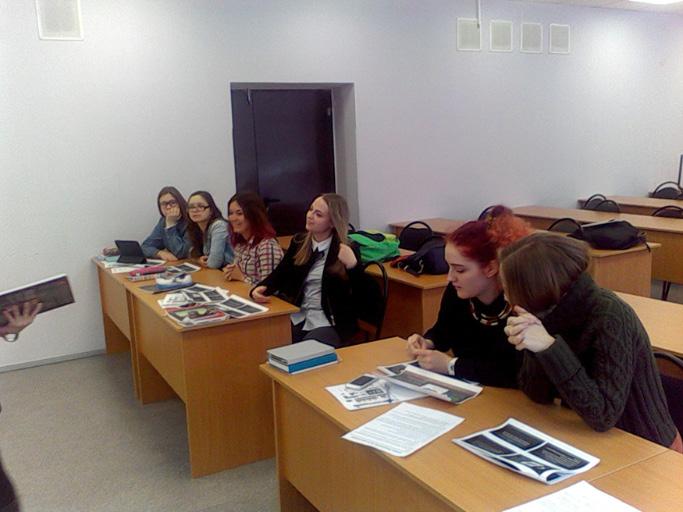
Reasoning and opinion expression
S econdly, the students were quite interactive during the process of doing the reasoning-gap task and opinion-gap task. The outcome was very communicative not only amongst the students, but also between me and them. They even attempted to clarify their reasoning and opinions in English even though they did not know how to express the exact meaning in English. Other groups actively explained to me in English only when I mistakenly understood some points of them. I could conclude that the comics elements were interesting for them to read and became interactive. The skills of negotiation for meaning and clarifying were noticed.
Hope for visual studies of history and literatures in the future
Thirdly, the feedback from the students was so positive that they have started to be interested in teaching reading strategy in reading class. Some of them hoped for continuing such kind of instructions in university courses. Here are some reflections from the students at the last session of my lesson:
Vika: I love comics. I read a lot of comic books, but I have never thought about the structure of the comics. Why not (to teach comics art in university in English)?! Sandman is a piece of art. Comics can teach about art and it could be in the reading courses not only in Russia but also in the whole world.
Alexandra: I used to learn about the history of superheros on the internet only through a Russian website called Kursera. There we only learn about the history of the superheros and it is quite boring. It is interesting to learn a new kind of history and comics art in English in this course.
Alyona: I have learnt something about the structure of graphic novels. It is very interesting to learn how comics are created.
Anya: I used to learn about only the stories of Disneyland comics in English but have never learnt about the art of comics in English reading and have never thought about it. I think I will read more about comics and pay attention to the structure.
Dasha: I think in school children would not like learning about the gutters, panels…I think learning reading about the comics art in English is better for those who are interested in drawing and arts.
Anya: I think comics should be in additional courses in the university.
Reflection on the field of Peace Studies
Adam Curle, as one of the first Peace Studies programs in Britain, redefines the function of Peace Studies as analyzing ‘unpeaceful relationships’ to ‘devise means of changing unpeaceful into peaceful relationships. The trend in most of the programs in universities is about the emergence of horrifying military technologies such as chemical and biological weapons. Thus, there is a need to investigate new methods in highly volatile situations: peacebuilding or peacekeeping roles which do not multiply the violence of the people in conflict by traditional military methods of intervention (Brunk, 2012: 15). Based on my teaching experiences on the graphic novels about Iran in Western Asia with the girls in the post-Soviet Nordic region, I propose that a hybrid form of private-public collection of artifacts for thematic analysis or secondary analysis could be for local civil society enhancement (Vayda, 1976: 4, cited by Ginty, 2008: 141-142) in museum exhibition, waste management, the method of visual anthropology for peace education. Here I hope that graphic novels with autobiography could also be one of the interesting media to pursue sustainable entrepreneurship in Asian History with Norwegian-Helsinki Committee, Russia and Hong Kong.





